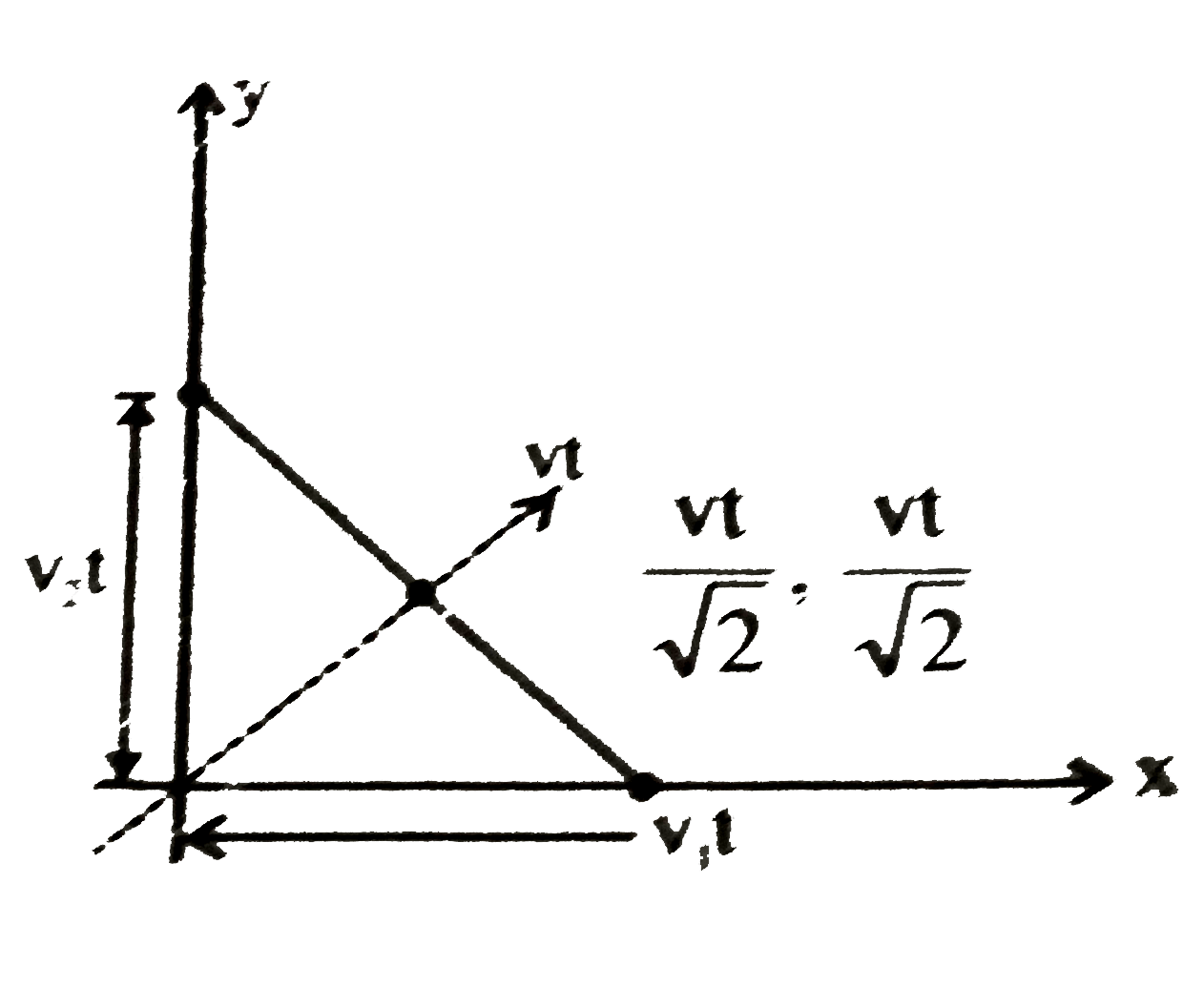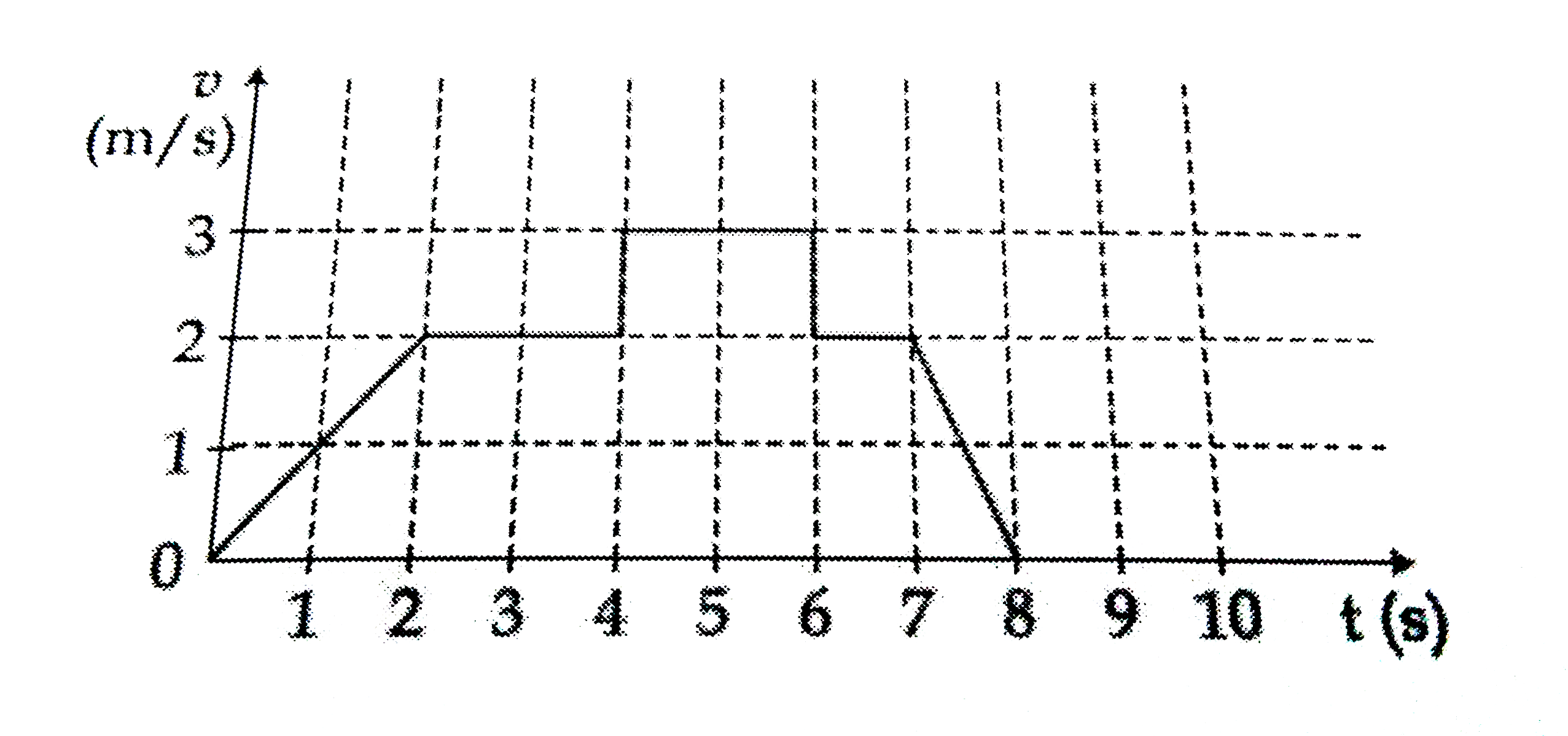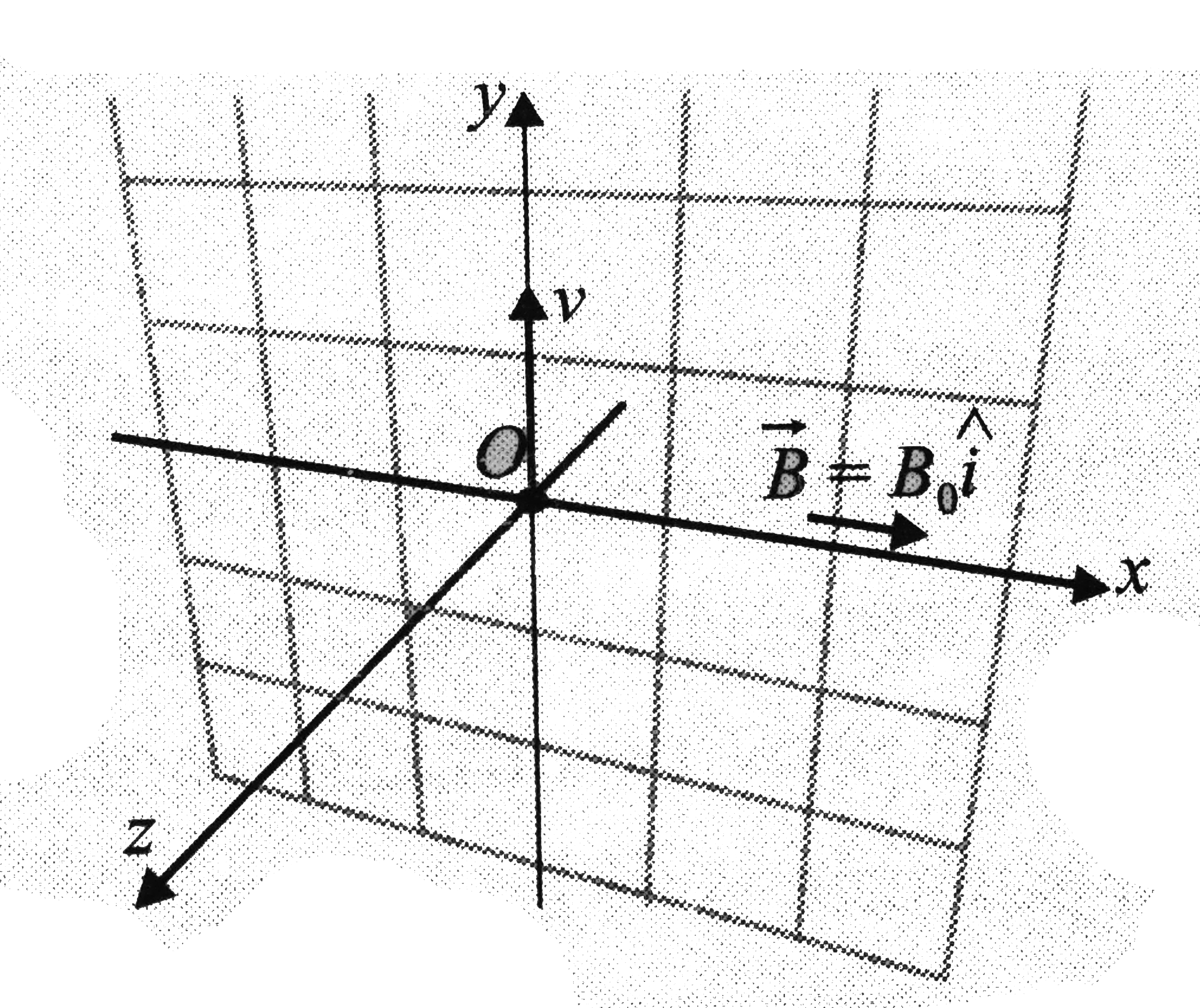Three particles start from origin at the same time: one with velocity v1 along positive x-axis, the second along the positive y-axis with a velocity v2 and the third along the line y = x with such a speed that all the three always stay in a straight line, then velocity of the third particles is:
√v1v2
v1+v22
v1v2√v21+v22
v1v2√2v1+v2
The correct Answer is:D
v2t−vt√2vt√2=vt√2v1t−vt√2

⇒v=v1v2√2v1+v2
Topper's Solved these Questions
- BOOK - BANSALCHAPTER - TEST PAPERSEXERCISE - PHYSICS PART (A)32videos
TEST PAPERS
- BOOK - BANSALCHAPTER - TEST PAPERSEXERCISE - PHYSICS PART (B)3videos
TEST PAPERS
- BOOK - BANSALCHAPTER - TEST PAPERSEXERCISE - PHYSICS PART- C4videos
TEST PAPERS
- BOOK - BANSALCHAPTER - SEMICONDUCTORSEXERCISE - CBSE Question32videos
SEMICONDUCTORS
Similar Questions
Three particles start from the origin at the same time, one with velocity u1 along the x-axis, the second with velocity u2 along the y-axis . Find the velocity of the third particles, along the x=y line so that the three particles may always lie on the same straight line.
View SolutionA particle starts from the origin at time t = 0 and moves along the positive x-axis. The graph of velocity with respect to time is shown in figure. What is the position of the particle at time t = 5s ?
 View Solution
View Solution
Knowledge Check
- Question 1 - Select One
Three particles start from the origin at the same time, one with a velocity v1 along the x-axis, second along the negative y-axis with a velocity v2 and third particle moves along the line x = y. The velocity of third particle, so that three may always lie on the same line is:
Av1+v22B√v1+v2Cv1v2v1+v2Dv=√2v1v2v1−v2 - Question 2 - Select One
Three particles starts from origin at the same time with a velocity 2ms−1 along positive x-axis, the second with a velocity 6ms−1 along negative y-axis, Find the velocity of the third particle along x=y line so that the three particles may always lie in a straight line.
A−3√3B3√2C−3√2D2√2 - Question 3 - Select One
Three particles A,B and C start from the origin at the same time,A with a velocity a along x-axis, B with a velocity b along y-axis and C with velocity c in XY plane along the line x=y.The magnitude of c so that the three always remain collinear is:
Aa+b2B√abCaba+bD√2aba+b
A particle moves with a velocity v(t)=(12)kt2 along a straight line . Find the average speed of the particle in a time t.
View SolutionA charge particle of mass m and charge q is projected with velocity v along y-axis at t=0.

Find the velocity vector and position vector of the particle →v(t)and→r(t) in relation with time.View SolutionA particle moves from A to B with a uniform velocity v1 and from B to A with a velocity v2. If it moves along a straight line between A and B, then the average velocity of the particle is
View SolutionA particle of mass m is moving along the line y-b with constant acceleration a. The areal velocity of the position vector of the particle at time t is (u=0)
View SolutionA particle is moving with speed v=b√x along positive x-axis. Calculate the speed of the particle at time t=τ (assume that the particle is at origin at t = 0).
View Solution

